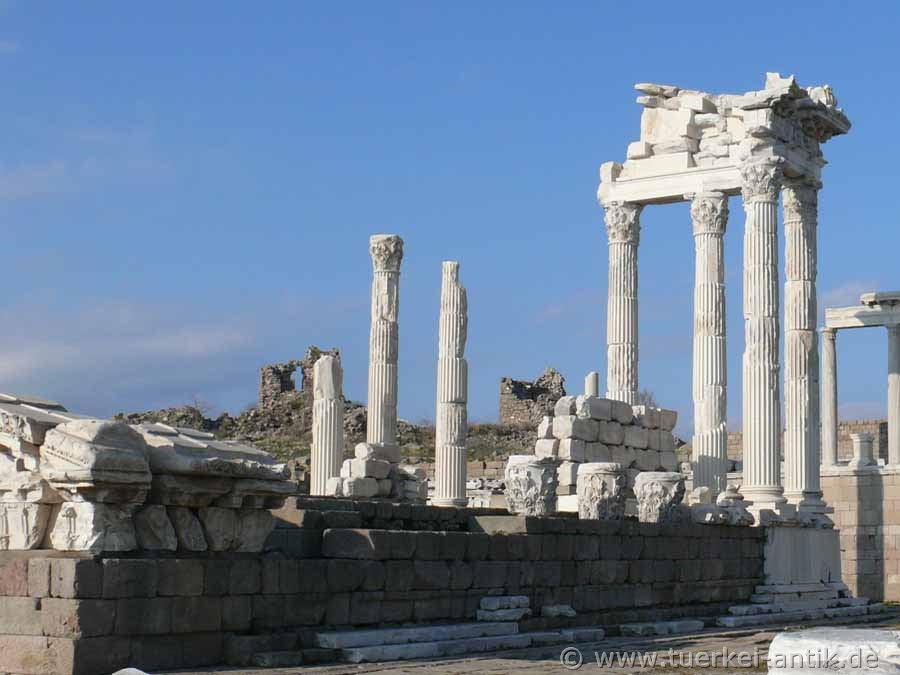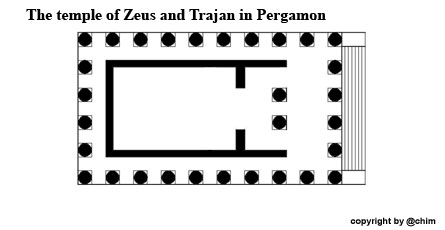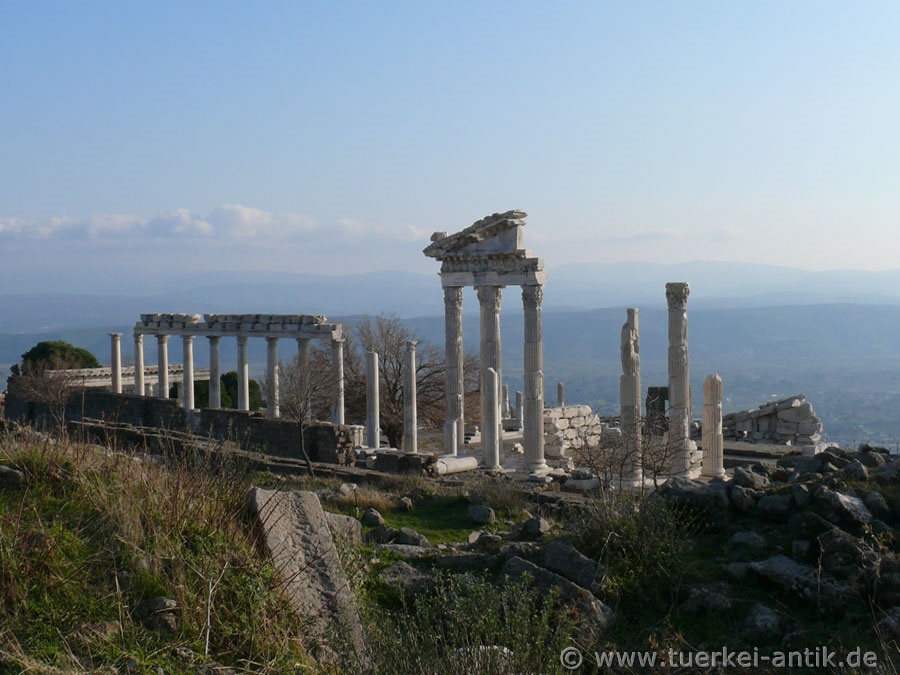 |
|
Ancient temples in Turkey Pergamon |
||||||||||||||||||||
|
|
|
|||||||||||||||||||
|
||||||||||||||||||||
|
The temple was built centrally on a prepared terrace measuring 60 x 70 metres. The temple, originally dedicated to Zeus, was built for Emperor Trajan and completed by his successor Hadrian after his death in Selinus. It was accessible from the south via an open staircase on a 2.90 metre high podium. |
||||||||||||||||||||
| Zeus / Trajan | ||||||||||||||||||||
|
Godfather Zeus is the supreme Olympic god of Greek mythology and more powerful than all other Greek gods combined. Zeus is usually represented with a sceptre and a bundle of lightning. Above him stood only the personified fate - his daughters, the moirs. He also had to submit to them. Marcus Ulpius
Traianus (* 18. September 53; † 8. August 117 in Selinus, today Gazipaşa), known as Trajan, was Roman Emperor from January 98 to 117. |
||||||||||||||||||||
| The history of Pergamon: | ||||||||||||||||||||
|
|
||||||||||||||||||||
|
|
||||||||||||||||||||
 |
||||||||||||||||||||
|
|
||||||||||||||||||||
| A part of the gable | ||||||||||||||||||||
|
|
||||||||||||||||||||
|
|
||||||||||||||||||||
| Photos: @chim | ||||||||||||||||||||
| Translation aid: www.DeepL.com/Translator | ||||||||||||||||||||
| Source: Wikipedia and others | ||||||||||||||||||||
|
|




